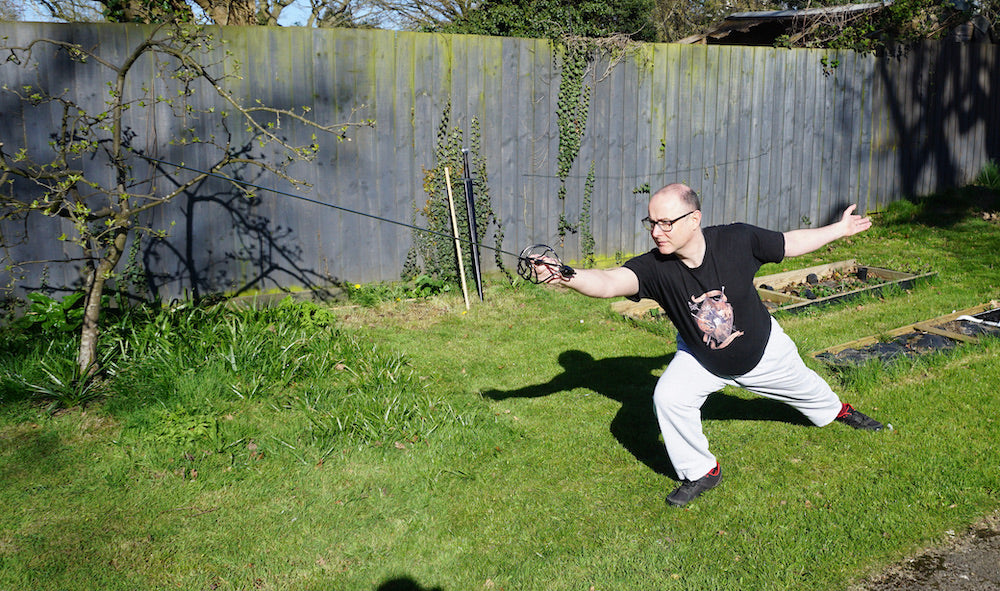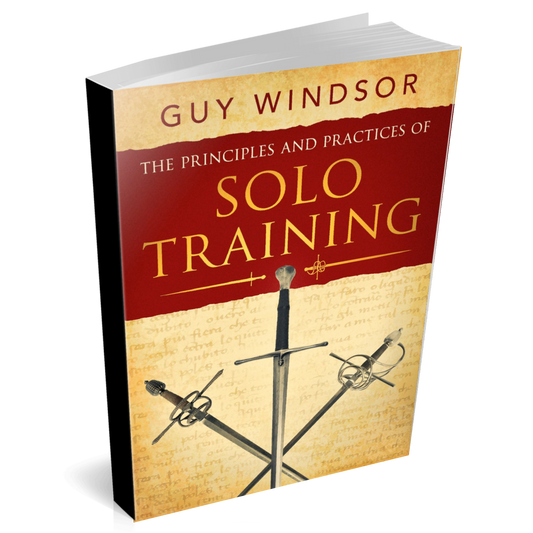You can also support the show at Patreon.com/TheSwordGuy Patrons get access to the episode transcriptions as they are produced, the opportunity to suggest questions for upcoming guests, and even some outtakes from the interviews. Join us!
Your challenge this month is to engage with your ranges of motion. Much of this post is adapted from my new book The Windsor Method: The Principles of Solo Training.
For every action you wish to do, you need the necessary range of motion, and sufficient strength exerted within the allotted time. You must also be able to route the forces created by any impact safely through your skeleton and into the ground. And you must be able to keep acting until the need for it has passed.
The principles of physical conditioning are therefore:
• Range of Motion
• Strength
• Power generation
• Grounding
• Stamina
Last month we developed our strength. This month, let’s dive into range of motion.
The range of motion you have is determined by the structure of your skeleton (which you can’t change, so let’s move on), the length of your muscles (which is easily changed), and the flexibility of your soft tissues. Let’s take a really simple example and work from there. Stand up on straight legs, reach up towards the ceiling with your hands, and – keeping your feet flat on the floor and your knees locked – bend over and see if you can touch your toes. For some people, reaching the knees is hard; others find it trivial to put their palms flat on the floor. Note how far you reach.
Now do a few squats, jump about a bit, swing your arms back and forth, and then repeat the toe-touching exercise. Chances are, you can now reach further. This is only because your muscles are willing to permit more movement. You haven’t made any real changes. When a muscle is stretched, it hits a point at which it contracts to prevent the stretch, to protect itself from tearing. This is called the stretch reflex. Increasing range of motion usually begins by resetting the stretch reflex. There are three common ways to do this.
1. Dynamic stretching: You can move gently in and out of the stretch position, encouraging your body to allow further movement. This is the only kind of stretching that is safe to do before strength or power training.
2. Passive stretching: You can hold the stretch for 30+ seconds. This lulls the muscle into a sense of security, and it will usually allow a longer stretch. You can then hold this for another 30+ seconds and get a bit further.
3. Plyometric stretching: You can hold the stretch, and then deliberately contract the muscle against the stretch (without allowing the muscle to actually shorten). Hold the contraction for about 10 seconds, and then relax. You will then be able to reach a bit further before the stretch reflex kicks in again.
In any given session of passive or plyometric stretching, reset the reflex a maximum of three times. After this, the muscle will be weaker and more prone to injury for a bit, so do it after any strength or power training.
Dynamic range of motion training is done by repeating an exercise at slightly greater ranges, over and over. For example, to increase the length of your lunge, do a series of lunges with an immediate recovery, making each lunge a bit longer than the one before it, until it becomes uncomfortable. Once you are at the edge of your comfort zone, hold the position for 10–30 seconds to establish your balance and allow the supporting structures to develop. It is simply dangerous to develop unsupported ranges of motion. If you don’t have the strength to hold the position, you probably shouldn’t go into it. Then repeat the dynamic motions, but keep an inch or so in the pocket: don’t go to the maximum range, because the static stretch will have temporarily reduced your strength.
Extended positions where your muscles are stretched to their maximum safe limit are inherently less stable than movements that are well inside your range. So you may want to use supports, such as a chair, table, climbing frame etc. That’s fine, but if you need external support to get into the position it’s not nearly ready to be used in any kind of dynamic situation. Go gently.
I do my range of motion work in the evening before bed, often while watching TV. I go through all the motions that I want to retain, and spend extra time on any area that is stiffer than usual, or where I am trying to develop more range for some reason.
You can follow along with a pre-recorded flexibility-based training session here:
https://vimeo.com/504380949/d22be1ece5
Or join me for a morning workout that always addresses range of motion here: Guywindsor.net/trainalong
And find the book “The Windsor Method” at guywindsor.net/solo





